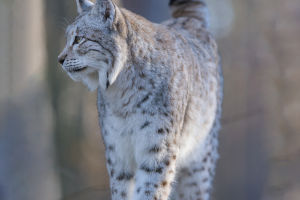High up in the tropical rainforests of Central and South America, a group of nimble and captivating creatures swing through the treetops.
Meet the Squirrel Monkeys, a genus of primates known for their acrobatic agility and endearing appearance. In this article, we delve into the fascinating world of squirrel monkeys, exploring their physical characteristics, social behavior, habitat, and conservation status. Join us as we uncover the secrets of these remarkable primates that bring life and vibrancy to the lush rainforest canopies.
Squirrel monkeys, belonging to the genus Saimiri, are small primates with slender bodies and long, bushy tails. They measure around 25 to 35 centimeters in length, with an additional tail length of about 35 to 42 centimeters.
Their fur is typically short and dense, ranging in color from olive to gray or brown, often with a lighter underbelly. Their faces are adorned with a distinctive white or cream-colored mask that surrounds their large, expressive eyes, creating an irresistible charm.
Squirrel monkeys are highly social animals, living in large groups called troops that can consist of up to 100 individuals. Within these troops, they form complex social hierarchies where females generally hold dominant positions.
They communicate through a repertoire of vocalizations, including chirps, trills, and screams, which play a vital role in maintaining social bonds and coordinating group activities. Grooming is another important aspect of their social behavior, reinforcing social bonds and promoting hygiene within the troop.
Squirrel monkeys inhabit the lush rainforests of Central and South America, including regions of Brazil, Peru, Ecuador, and Colombia. They are well adapted to life in the canopy, spending the majority of their time in the upper levels of the forest.
Their long, flexible tails act as a balancing tool, allowing them to effortlessly navigate the intricate network of branches. Their sharp claws and agile limbs enable them to leap, climb, and swing with remarkable dexterity, making them the acrobats of the forest canopy.
Squirrel monkeys are omnivorous, with a diet consisting primarily of fruits, flowers, and seeds. They are opportunistic foragers, utilizing their agile bodies and sharp eyesight to locate and exploit food sources within their environment.
Additionally, they supplement their diet with insects, spiders, bird eggs, and small vertebrates. This dietary flexibility ensures their survival in the dynamic rainforest ecosystem, where food availability can vary seasonally.
While squirrel monkeys are not currently considered endangered, they face several threats that require attention and conservation efforts. Habitat loss due to deforestation, primarily driven by agriculture, logging, and urbanization, poses a significant risk to their populations.
Fragmentation of their natural habitat further exacerbates the threat by isolating groups and hindering gene flow. Additionally, the illegal pet trade remains a concern, as squirrel monkeys are often captured and sold as exotic pets. Conservation initiatives focused on habitat protection, education, and sustainable development are essential for safeguarding these captivating primates.
Scientists and conservation organizations have conducted extensive research on squirrel monkeys to better understand their behavior, ecology, and social dynamics. These studies contribute to conservation efforts by providing valuable insights into the species' needs and vulnerabilities.
Conservation programs aim to protect their habitats, promote sustainable practices, and raise awareness about the importance of preserving biodiversity in tropical rainforests. Ecotourism initiatives also offer opportunities for responsible wildlife observation, generating income for local communities and fostering an appreciation for squirrel monkeys and their ecosystem.
Squirrel monkeys, with their enchanting appearance, social nature, and remarkable agility, hold a special place in the rich tapestry of tropical rainforests.
These acrobats of the canopy captivate us with their intricate movements and vibrant presence. From their physical features to their complex social structures, squirrel monkeys embody the beauty and adaptability of life in the rainforest.


